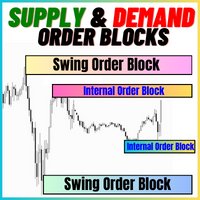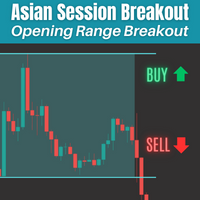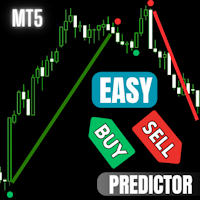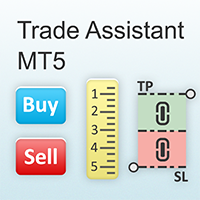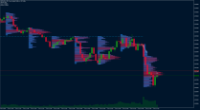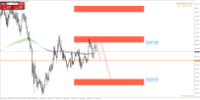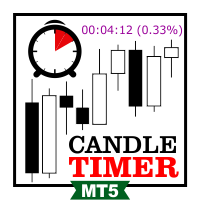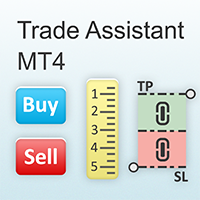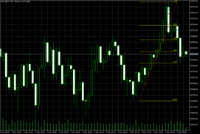Published article "Reimagining Classic Strategies (Part 12): EURUSD Breakout Strategy".

Join us today as we challenge ourselves to build a profitable break-out trading strategy in MQL5. We selected the EURUSD pair and attempted to trade price breakouts on the hourly timeframe. Our system had difficulty distinguishing between false breakouts and the beginning of true trends. We layered our system with filters intended to minimize our losses whilst increasing our gains. In the end, we successfully made our system profitable and less prone to false breakouts.
Published article "Trading Insights Through Volume: Trend Confirmation".

The Enhanced Trend Confirmation Technique combines price action, volume analysis, and machine learning to identify genuine market movements. It requires both price breakouts and volume surges (50% above average) for trade validation, while using an LSTM neural network for additional confirmation. The system employs ATR-based position sizing and dynamic risk management, making it adaptable to various market conditions while filtering out false signals.
Published article "Price Action Analysis Toolkit Development Part (4): Analytics Forecaster EA".

We are moving beyond simply viewing analyzed metrics on charts to a broader perspective that includes Telegram integration. This enhancement allows important results to be delivered directly to your mobile device via the Telegram app. Join us as we explore this journey together in this article.
The most downloaded free products:
Bestsellers in the Market:
Published article "Chemical reaction optimization (CRO) algorithm (Part II): Assembling and results".

In the second part, we will collect chemical operators into a single algorithm and present a detailed analysis of its results. Let's find out how the Chemical reaction optimization (CRO) method copes with solving complex problems on test functions.
The most downloaded free products:
Bestsellers in the Market:
The most popular forum topics:
- What to feed to the input of the neural network? Your ideas... 23 new comments
- Machine learning in trading: theory, models, practice and algo-trading 20 new comments
- Code protection against freelancer 12 new comments
Published article "Introduction to MQL5 (Part 10): A Beginner's Guide to Working with Built-in Indicators in MQL5".

This article introduces working with built-in indicators in MQL5, focusing on creating an RSI-based Expert Advisor (EA) using a project-based approach. You'll learn to retrieve and utilize RSI values, handle liquidity sweeps, and enhance trade visualization using chart objects. Additionally, the article emphasizes effective risk management, including setting percentage-based risk, implementing risk-reward ratios, and applying risk modifications to secure profits.
Bestsellers in the Market:
The most downloaded free products:
Most downloaded source codes this month
- AutoFibo indicator of two last swings based on ZigZag The AutoFibo indicator is an advanced Fibonacci retracement tool that automatically draws Fibonacci levels based on the ZigZag pattern. This indicator is designed to help traders quickly identify potential support and resistance levels in trending markets.
- SuperTrend SuperTrend indicator.
- Candle Time End and Spread The indicator displays the current spread and the time till closing the bar (candlestick) at the same time.
Most read articles this month
How to earn money by fulfilling traders' orders in the Freelance service
MQL5 Freelance is an online service where developers are paid to create trading applications for traders customers. The service has been successfully operating since 2010, with over 100,000 projects completed to date, totaling $7 million in value. As we can see, a substantial amount of money is involved here.

How to purchase a trading robot from the MetaTrader Market and to install it?
A product from the MetaTrader Market can be purchased on the MQL5.com website or straight from the MetaTrader 4 and MetaTrader 5 trading platforms. Choose a desired product that suits your trading style, pay for it using your preferred payment method, and activate the product.

In this article, we demonstrate an easy way to install MetaTrader 5 on popular Linux versions — Ubuntu and Debian. These systems are widely used on server hardware as well as on traders’ personal computers.
New publications in CodeBase
- High-Performance Time Functions (TimeUtils) High-performmance functions for dealing with time.
- Converted from Pine Script - Fibonacci Bollinger Bands This Fibonacci Bollinger Bands indicator is a conversion from Pine Script (by Rashad) to the MQL5 language.
Published article "Trading with the MQL5 Economic Calendar (Part 4): Implementing Real-Time News Updates in the Dashboard".

This article enhances our Economic Calendar dashboard by implementing real-time news updates to keep market information current and actionable. We integrate live data fetching techniques in MQL5 to update events on the dashboard continuously, improving the responsiveness of the interface. This update ensures that we can access the latest economic news directly from the dashboard, optimizing trading decisions based on the freshest data.
The most downloaded free products:
Bestsellers in the Market:
4 new signals now available for subscription:
| Growth: | 333.83 | % |
| Equity: | 5,192.15 | USD |
| Balance: | 5,208.51 | USD |
Published article "Generative Adversarial Networks (GANs) for Synthetic Data in Financial Modeling (Part 1): Introduction to GANs and Synthetic Data in Financial Modeling".

This article introduces traders to Generative Adversarial Networks (GANs) for generating Synthetic Financial data, addressing data limitations in model training. It covers GAN basics, python and MQL5 code implementations, and practical applications in finance, empowering traders to enhance model accuracy and robustness through synthetic data.
The most downloaded free products:
The most popular forum topics:
- Unable to Install An MT4 indicator which I once Purchased 2 years ago 59 new comments
- Machine learning in trading: theory, models, practice and algo-trading 36 new comments
- Features of the mql5 language, subtleties and tricks 16 new comments
Bestsellers in the Market:
2 new signals now available for subscription:
Most downloaded source codes this week
- SUPERMACBOT The SUPERMACBOT is a fully automated trading robot that combines the power of the Moving Average Crossover strategy with the MACD Indicator to deliver precise and reliable trade signals. This Expert Advisor is designed to work seamlessly on all symbols and timeframes, offering versatility and adaptability for traders across various market conditions.
- SuperTrend SuperTrend indicator.
- Examples from the book "Neural networks for algorithmic trading with MQL5" The book "Neural networks in algorithmic trading with MQL5" is a comprehensive guide, covering both the theoretical foundations of artificial intelligence and neural networks and practical aspects of their application in financial trading using the MQL5 programming language.
Most read articles this week
How to earn money by fulfilling traders' orders in the Freelance service
MQL5 Freelance is an online service where developers are paid to create trading applications for traders customers. The service has been successfully operating since 2010, with over 100,000 projects completed to date, totaling $7 million in value. As we can see, a substantial amount of money is involved here.

How to purchase a trading robot from the MetaTrader Market and to install it?
A product from the MetaTrader Market can be purchased on the MQL5.com website or straight from the MetaTrader 4 and MetaTrader 5 trading platforms. Choose a desired product that suits your trading style, pay for it using your preferred payment method, and activate the product.

In this article, we demonstrate an easy way to install MetaTrader 5 on popular Linux versions — Ubuntu and Debian. These systems are widely used on server hardware as well as on traders’ personal computers.
Bestsellers in the Market:
The most downloaded free products:
Bestsellers in the Market:
New publications in CodeBase
- CloseAgent Optimal closing tool with Bollinger Bands and RSI.
- Range Levels The indicator draws the nearest levels of the specified price range.
Published article "Price Action Analysis Toolkit Development (Part 3): Analytics Master — EA".

Moving from a simple trading script to a fully functioning Expert Advisor (EA) can significantly enhance your trading experience. Imagine having a system that automatically monitors your charts, performs essential calculations in the background, and provides regular updates every two hours. This EA would be equipped to analyze key metrics that are crucial for making informed trading decisions, ensuring that you have access to the most current information to adjust your strategies effectively.
Published article "MQL5 Wizard Techniques you should know (Part 50): Awesome Oscillator".

The Awesome Oscillator is another Bill Williams Indicator that is used to measure momentum. It can generate multiple signals, and therefore we review these on a pattern basis, as in prior articles, by capitalizing on the MQL5 wizard classes and assembly.
